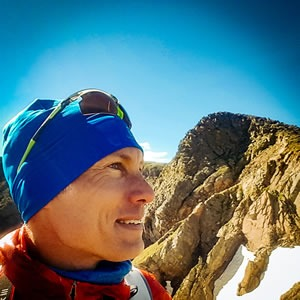As you ramp up your triathlon training for the upcoming season, you will no doubt spend countless hours doing discipline-specific workouts. But, if you’re like most people, I bet there’s one activity you will spend even more time doing—sitting.
Even active individuals spend too much time sitting—in the car, at home, at work. If your job involves a computer, chances are you spend more time sitting in front of a screen than you do training—and that doesn’t even include non-work computer time. If sitting were a sport, we may all be overtraining. All this sitting can lead to muscular imbalances that translate into poor form or even injuries in our multisport activities.
The problem stems from the way we typically sit—or slouch—hours at a time in front of a computer. Neck protracted. Shoulders internally rotated. Core muscles disengaged. Glutes asleep. Hamstrings shortened. Spend enough time in this position and the postural habits will inevitably carry over into your swimming, biking, and running.
It’s a recipe for sleepy glute syndrome, tight hamstrings and iliotibial bands, and rotator cuff issues. That track workout and strength session you do today may not be enough to counteract the postural habits you accrue from your eight-hour sitting session at your desk Monday through Friday.
The solution is to treat your everyday activities, including sitting, as an extension of your overall training. Seek ways to cultivate healthy postural habits throughout the day that will positively transfer to your multisport activities.
In other words, sit up in that chair. Keep your back straight with your head in a neutral position. Allow your shoulder blades to sink into your back pockets. Align your ears over your shoulders, and your shoulders over your hips to avoid that forward slouch.
Better yet, replace the chair—if only part of the time—with a stand-up desk arrangement. At the least, incorporate frequent breaks into your workday to break up extended hours of sitting at a desk.
During your breaks from sitting, stand up and do some muscle activation exercises and dynamic stretches to wake up the lines of communication to underused muscles and to increase mobility in tight areas. Here are a few:
- Activate your core by pulling your belly button toward your spine; then raise your arms above your head and lean back slightly while balanced on one leg. Hold it for five seconds; then switch to the other leg.
- Engage the core and open up the hips by standing up straight and moving the hips in small circles as if you were twirling a hula hoop around your waist. Do several clockwise circles; then switch to the other direction.
- Target your hips by standing on one leg and moving your opposite leg back and to the side. Hold for five seconds; then switch legs. Or, stand on both legs and alternately squeeze one glute and then the other, as you sway side to side.
- Balance on one leg and lift the knee of the opposite leg up until your thigh is parallel to the ground. Place your arms in a running position so that you adopt a good runner’s stance. From this position, squeeze your glute and pull your elevated leg back; use your arms just as you would if you were running. Then drive your knee back into the starting position. Repeat several times on each leg.
- Increase blood flow to your calves with some toe raises. Contract your calves to stand on your toes; then slowly lower back down. Raise up on both calves and gently lower on one to isolate one calf at a time.
Address areas of tightness with some static stretches:
- Open up the chest with a doorway or wall stretch. To stretch the right side, stand against a wall with the right side of your face looking left. Raise your right arm so it is parallel to the floor; then bend the elbow about 10-15 degrees. Use your left hand to push the left side of your body off the wall. You should feel a stretch in the right side of your chest. Hold for at least 30 seconds; then switch sides.
- To stretch your back, start with a half wall hang. With your feet shoulder-width apart, place your hands against a wall. Slowly step away from the wall as you slide your hands down the wall until your hands, shoulders, and hips are aligned and parallel to the floor. Push your hands into the wall and pull your hips away from the wall as you feel a stretch in your lower back.
- From the half wall hang, move into a full hang to target more of your hamstrings. Move your hands down the wall to the floor and hang with waist bent and head relaxed.
- Stretch your calves with the wall bent knee calf stretch (lower calf) and wall straight leg calf stretch (upper calf).
No matter how many hours you dedicate to swimming, biking and running, you may still be spending more time sitting at a desk or in a car. The key is to turn that sitting time into bonus training time by focusing on good posture and breaking up hours in a chair with light activities that support your overall health and fitness goals.


